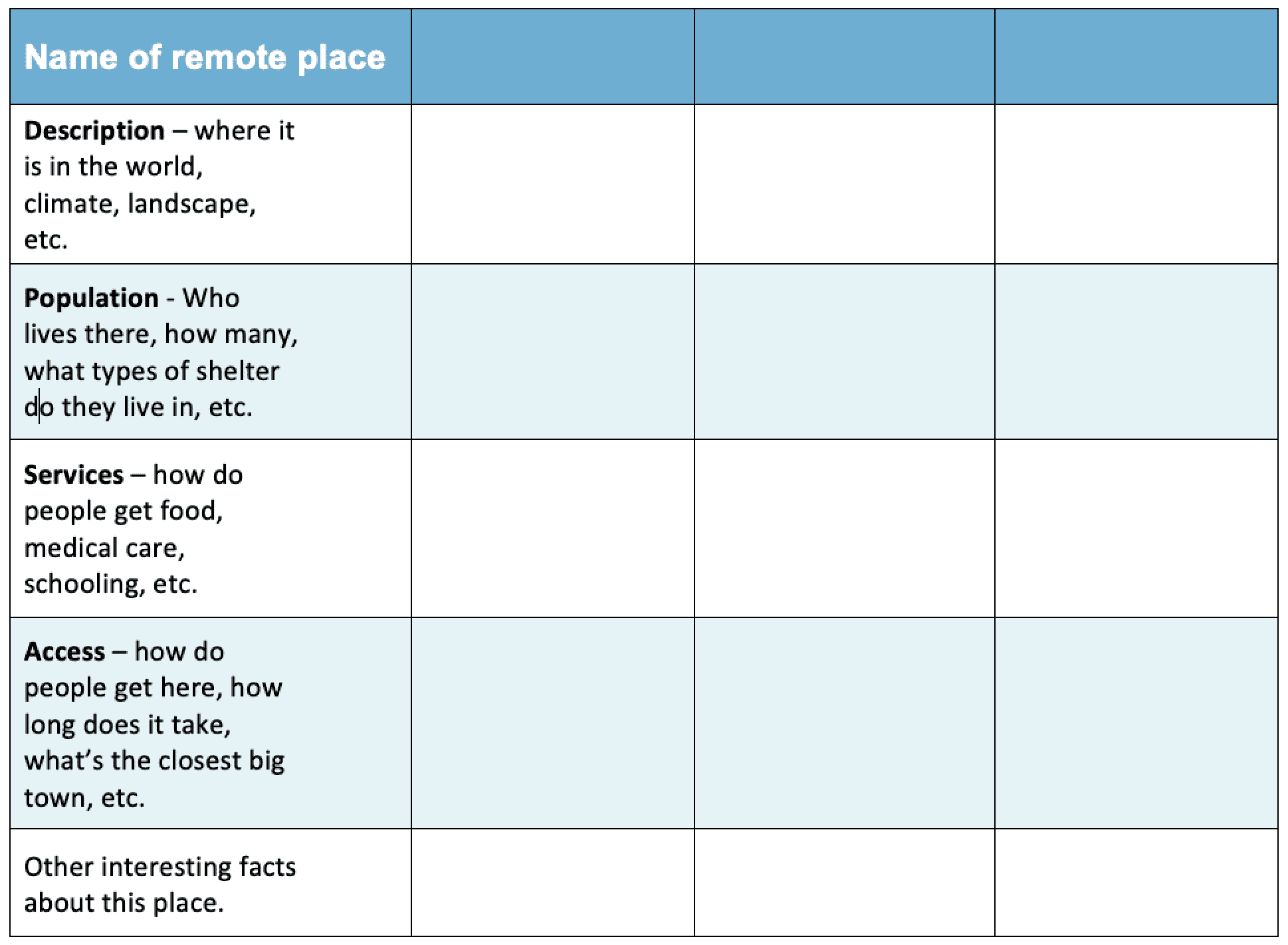Information for Teachers
Curriculum links
This investigation is linked to the following C3 Social Studies Standards for Grades 3–5.
D2.Eco.1.3-5. Compare the benefits and costs of individual choices
D2.Geo.2.3-5. Use maps, satellite images, photographs and other representations to explain relationships between the locations of places and regions and their environmental characteristics
D2.Geo.6.3-5. Describe how environmental and cultural characteristics influence population distribution in specific places or regions
How to search the internet
1 Keep your request short
Fewer words will give a more accurate search.
2 Choose exactly what you want
For example: Arctic Circle Climate
3 Use quotes
Double quotes around a set of words tell the search engine to consider those exact words in that exact order without any change. For example: “Arctic Circle Climate”
4 Use the plus sign (+)
If you add a plus sign (+) between words, the internet will search for all the words. For example: migrate+birds+whales+mammal
5 Use the minus sign (–) to say what you don’t want
Use a minus sign (–) to show words you do not want to appear in your results. For example: if you search for burrowing animals and do not want mammals in your search, –mammals will exclude mammals. Note that you need to put a space before the minus sign for the word to be excluded.
6 Be very clear about what you don’t want
Part 1
Ask questions and define problems
After reading Living Away from It All, you may have further questions about how people live in remote places.
List your questions
- Compare your list with questions that others have.
- Choose a question you would like to investigate.
- You can work alone, with a partner, or in a small group.
You may want to choose one or more of these questions to investigate
Q1. How do people access services in remote places?
Q2. Where are the most remote places in the world to live? What are these places like?
Q3. In what places do uncontacted tribes still live? What are these people like? How do they live?
Go to Part 2 Investigate →Part 2
Investigate
Helpful websites
You may want to use websites to help with your investigations.
You can use words like these in doing a search: Living in remote places, indigenous tribes living in remote places, remote towns.
Once you decide on a remote place or remote group of people to investigate, you can use this place name, or the name of the group of people in searches.
You might like to find out more about one of the places discussed in the book or to investigate what it is like to live in another remote place. Some remote places to consider are Oymyakon in Russia, Easter Island, The island of Tristan da Cunha, and Ittoqqortoormiit in Greenland.
Go to Part 3 Record data →Part 3
Record data
Find a way of recording your information that will allow you to see any patterns in the data.
Data Chart for information about remote places
(Download and change to suit your information)
 Download Chart
Download Chart
Go to Part 4 Organize, analyze, and interpret data →
Part 4
Organize, analyze, and interpret data
1. Look over the information you have gathered and the patterns you have found
What similarities have you found about living in remote places?
In what ways can remote places be different?
2. Search for other patterns
Think about the places you have investigated. In your opinion, what are the positives and negatives about each place?
3. Makes notes about what you find.
Go to Part 5 Present and share →Part 5
Present and share
Look over all your information that you have gathered in your investigation.
What are the most important ideas about living in remote places?
Make a chart showing the most important ideas.
 Download Chart
Download Chart
← Return to menu